It’s only over the past 12 months or so that I’ve rediscovered film photography. Back when I was in college, it was the only option – I’m old enough to pre-date digital – but thanks to a friend handing me a nice Minolta X-700 and lenses some time ago, I’m back enjoying film again, alongside my digital cameras I’ve been using for the past 15-20 years.
A few years ago, I uploaded a tutorial video to YouTube where I explained how I processed digital infrared images. This video has proven to be strangely popular, gaining thousands of views (most of my videos are lucky to get 100 views!) so I decided it was time to try some infrared film.

My first decision was which camera to use. I had the choice of the Minolta on 35mm, or a Mamiya C330 I picked up on ebay. The choice wasn’t immediately straightforward, as the two systems had pros and cons:
In favour of the 35mm camera was the fact that the lens has an infrared marking. If you weren’t already aware, infrared light focuses on a slightly different plane to visible light, and many SLR lenses offer a marking on the barrel to indicate the adjustment required.
However – for a “proper” infrared result, it’s still necessary to use an infrared filter to block visible light. Without this you’ll end up with an image that looks more like a normal black and white shot. Because these filters block visible light, it means they’re almost completely dark to look through, which would make composing an image rather difficult.
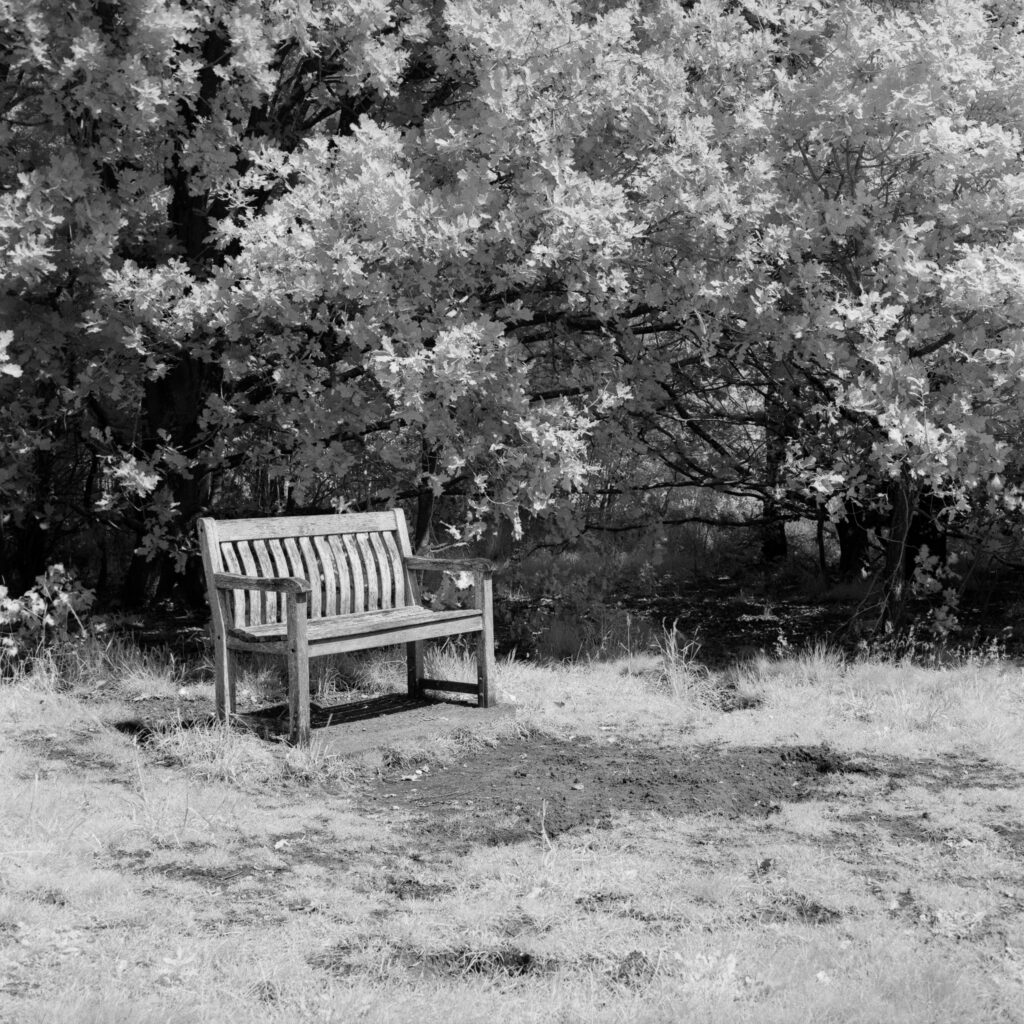
This is where the Mamiya C330 has an advantage- being a TLR, you compose and focus through one lens, and take the shot through the other. The downside is that the bellows focusing doesn’t offer any markings for adjusting to suit infrared. Now, I could have composed and focused a photo with the Minolta without the filter on the lens, then put the filter on to take the shot, but I also liked the idea of the higher image quality of medium format. In addition, some googling suggested that with a sufficiently small aperture (F11 onwards) the adjustment in focus wasn’t so necessary.
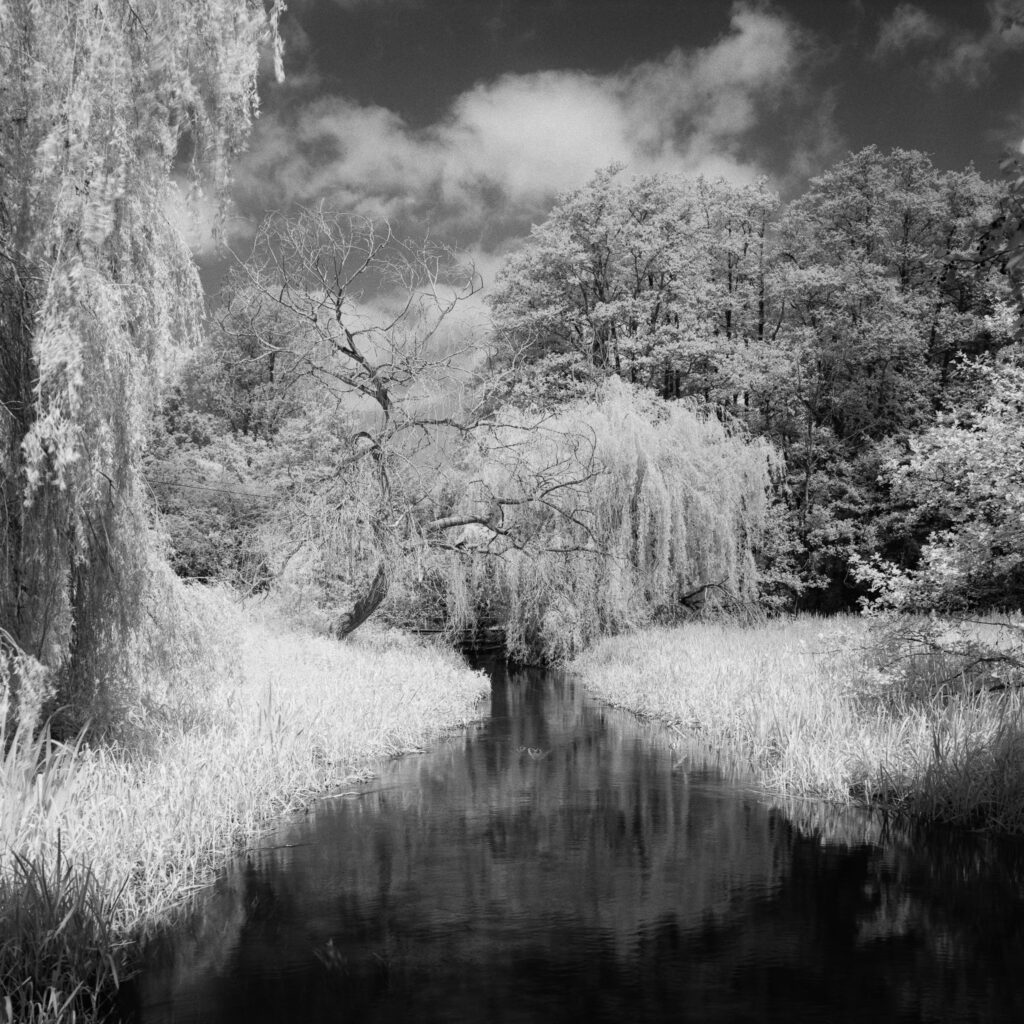
Choice made, I headed out on a sunny day, armed with some Rollei infrared film and a 720nm infrared filter. The actual shoot was straightforward. The C330 lacks a lightmeter of any sort so I used the same app on my phone as usual. The only difference was that I had to meter at 25 ISO instead of the native 400 ISO of the film (this is because 400 is based on shooting without any filters).
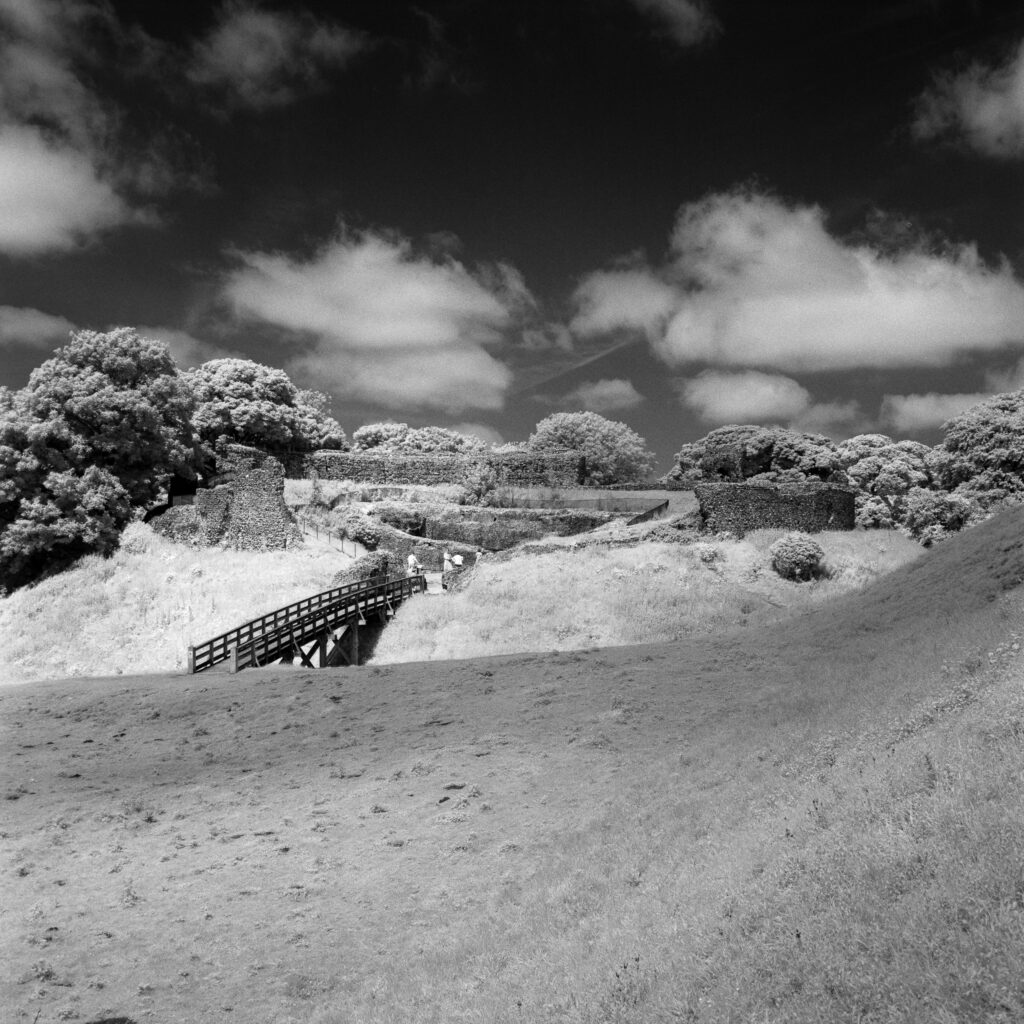
The main feature of infrared is that foliage tends to show up very brightly, whereas blue sky comes out much darker. Clouds also show up quite brightly. So the ideal subject for infrared would be a photogenic tree on a sunny day with some scattered clouds. I shot half the film around some woodland, and then finished off at the castle ruins in Castle Acre to see how the stonework came out. Back home, I developed in Rodinal at 1+50 using Rollei’s suggested exposure time, and was pleased to see the shots came out correctly. Having proven the concept works, I’m likely to order another roll or two to keep in for when another infrared-suitable subject presents itself.
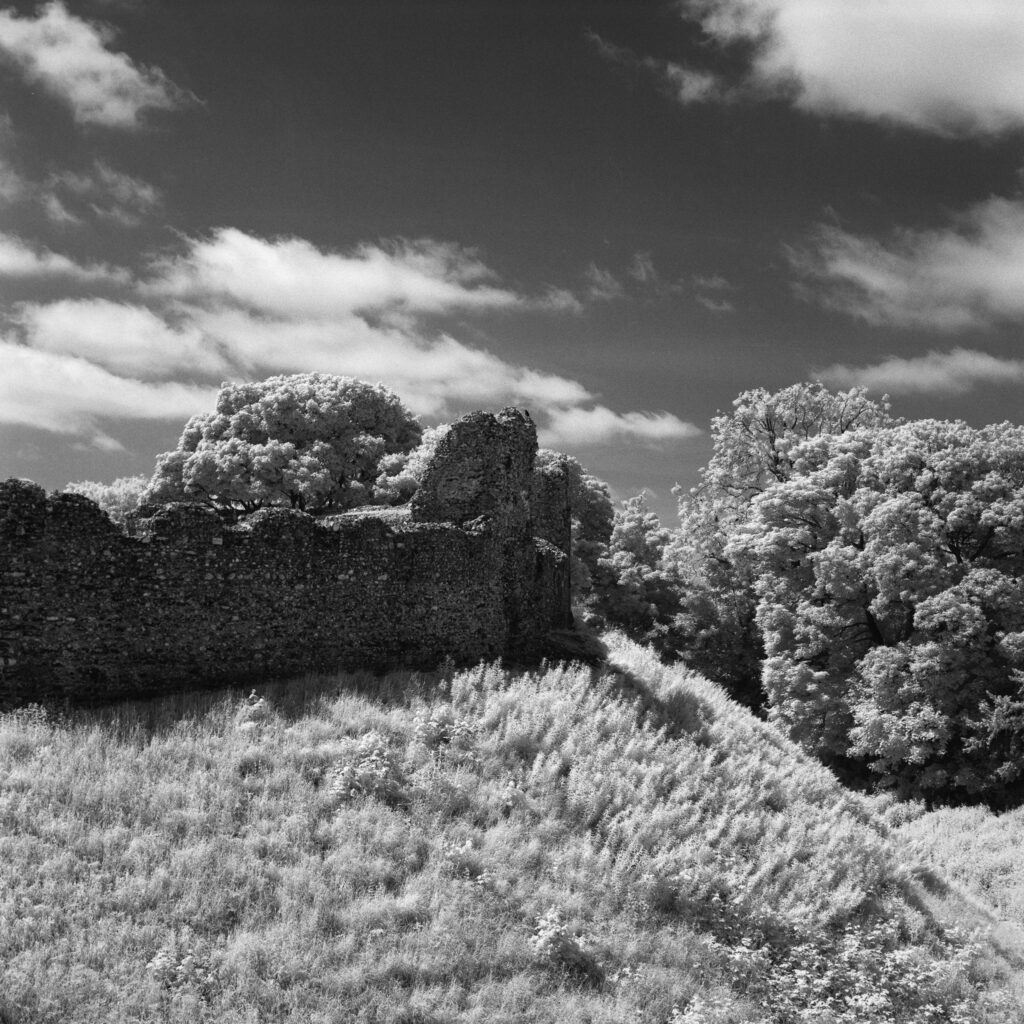
If you’d like to see more images from the set, or more details on the shooting process, you can watch the video on YouTube, or follow me on Instagram
Share this post:
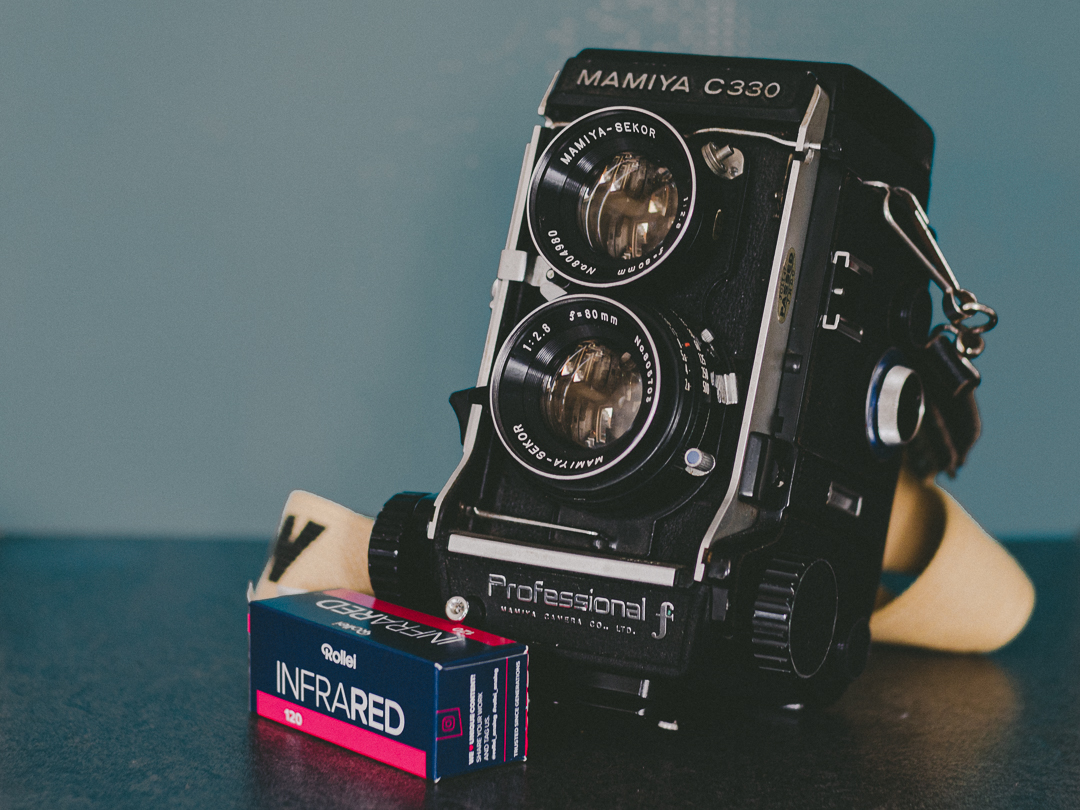








Comments
Paul Quellin on 5 Frames with a Mamiya C330 and Rollei Infrared film
Comment posted: 13/07/2024
Comment posted: 13/07/2024
Geoff Chaplin on 5 Frames with a Mamiya C330 and Rollei Infrared film
Comment posted: 13/07/2024
Comment posted: 13/07/2024
John Earnshaw on 5 Frames with a Mamiya C330 and Rollei Infrared film
Comment posted: 13/07/2024
Comment posted: 13/07/2024
Tim Bradshaw on 5 Frames with a Mamiya C330 and Rollei Infrared film
Comment posted: 13/07/2024
Comment posted: 13/07/2024
Roger on 5 Frames with a Mamiya C330 and Rollei Infrared film
Comment posted: 13/07/2024
Is your much viewed video the one you link to at the bottom of your post, or is it a different one?
Comment posted: 13/07/2024
Gary Smith on 5 Frames with a Mamiya C330 and Rollei Infrared film
Comment posted: 13/07/2024
Comment posted: 13/07/2024
Comment posted: 13/07/2024
Francois Marlier on 5 Frames with a Mamiya C330 and Rollei Infrared film
Comment posted: 13/07/2024
Comment posted: 13/07/2024
Alasdair Mackintosh on 5 Frames with a Mamiya C330 and Rollei Infrared film
Comment posted: 13/07/2024
Comment posted: 13/07/2024
Marcus Gunaratnam on 5 Frames with a Mamiya C330 and Rollei Infrared film
Comment posted: 14/07/2024
Comment posted: 14/07/2024
Ibraar Hussain on 5 Frames with a Mamiya C330 and Rollei Infrared film
Comment posted: 15/07/2024
I’ve only ever shot one real IR film - being Kodak HIE years ago
Eric on 5 Frames with a Mamiya C330 and Rollei Infrared film
Comment posted: 16/07/2024